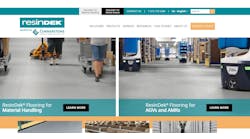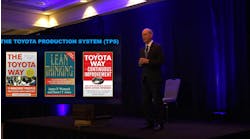A Roadmap to Expanding Your Manufacturing Talent Pipeline
With an estimated 4 million manufacturing jobs needing to be filled by 2030, and the current manufacturing workforce turning over at a high rate as Baby Boomers age out, you will need to be more strategic about meeting your workforce needs. The dynamic is even more challenging because many younger people are not even aware of what modern manufacturing is, let alone what to expect on the job in terms of duties and behaviors, skill sets, and work environment.
If you limit your workforce options, you could be hurting your business. Essentially, you must expand your horizons before you can expand your pipeline of prospects. You may need to rethink your approach regarding:
-
Where to look for prospects: It’s not about where you got your talent; it’s about what talent your prospects have.
-
What makes someone a prospect: It’s about skills, not just experience and background.
Expanding your prospect pipeline does not equate with lowering your standards for hiring. As you expand your pool, you may need to look at things differently, which means success will come in different ways, from different places, with different people. This can also set you apart in the community; establishing your company as a potential employer for everyone.
Let’s look at a roadmap to follow for expanding your manufacturing talent pipeline.
Consider Nontraditional Manufacturing Prospects
One of the most powerful ways to expand your talent pool is to consider non-traditional prospects. Historically, many companies looked for reasons not to consider people with disabilities or felony convictions, but, as we have pointed out, you have to take different approaches to grow your pipeline. You might be surprised by what you learn, as many manufacturers are benefiting from non-traditional hires.
Do not overlook the importance of internal changes you may need to accommodate a different approach. There are assessments available to gauge your readiness to accept nontraditional employees and help you create a customized response plan. For example, bringing in previously incarcerated people could create anxiety or even fear among your staff, so you might consider your communications strategy and related plan. Hiring people with Autism requires different training and communication for the hiree, but they also need a supportive environment.
Uniquely-Abled People
A CNC machining company in Massachusetts has had success in hiring people on the Autism spectrum. People who are on the autism spectrum excel at focused, detail-oriented work and have outstanding technical skills. It’s also good for business.
Companies that have diversified their workforce to include people with disabilities reported a 90 percent increase in retention of valued employees and a 72 percent increase in employee productivity. People notice when you are a caring company.
Second Chance/Reentry
Many states are now offering credentialed manufacturing skills training to incarcerated people as they prepare for reentry into society. The desire to turn one’s life around, combined with structured support, can go a long way to help someone succeed in the first two years out of prison, which is key for avoiding recidivism. This population also often produces a much more loyal employee as they appreciate that you are giving them a chance, looking beyond their background check. A hiring manager at a manufacturer in Baltimore says their second chance hires have an 80 percent retention rate compared to 60 percent for the general population.
ESL and Non-English Speakers
Many manufacturers around the country have succeeded in hiring clusters of citizens or immigrants who speak English as a second language (ESL). Can you train someone who is not fluent in English to do the task and understand safety procedures? The answer is often yes. One manufacturer who hired a group of Afghan refugees found they brought a natural support group and safety net for each other, not only helping peers with job training but in other areas such as providing transportation. You may be able to hire groups of non-English speakers who can work in the same production cell with a supervisor who speaks their native language.
People Facing Barriers to Employment
Many qualified prospects are limited by transportation options or their children’s school schedules or daycare needs. Can you accommodate them with flexible scheduling or support for transportation? There may be additional support services available through local workforce entities and/or community nonprofit organizations.
Recruit Based on the Skills You Need, Not Job Titles
Just as you can forecast demand in your supply chain, you can forecast demand for your workforce. You can predict what skills you will need to hire, and start your recruitment effort from there. You should strive to attract prospects based on abilities and competencies, not just using job titles.
One example is for industrial technicians and repair. The job attracts those with a natural curiosity and aptitude for working with machines, but it also relies on the ability to interpret data, manage resources, troubleshoot, and communicate. The job title is not the most important consideration for a prospect.
There are tools to help you. Artificial intelligence (AI) software can help improve your job descriptions and identify what is unattractive about the job to nontraditional applicants.
You also should look at how you screen prospects and train newcomers. Use more of a hands-on approach for competency testing than written tests to assess knowledge. Contextualized training will be more effective for many nontraditional hires, such as using a real-world blueprint of products they will be working on as opposed to a traditional curriculum for how to read a blueprint.
Build Your Pipeline Approach With Sustainability in Mind
Expanding your talent pipeline is about more than how you approach prospects and applicants. You will need to evolve your organization and workplace culture to embrace doing things differently. This also is part of how you set yourself apart in your community.
This starts with how you communicate your value proposition to prospects and includes how you set expectations and meet their needs through recruitment, onboarding, and initial training. Companies that employ regular coaching and constructive feedback to their employees will stand out and are more likely to be employers of choice in a community.
One of the most effective tactics you can use is to implement “stay interviews'' with existing employees to learn about the reasons they remain on the job. Your employees will help you shape the messaging for why people might be attracted to positions in your company. Other actions to take include:
-
Develop internal career pathways and opportunities for upward mobility within their organizational structure.
-
Use On-the-Job training to transfer knowledge from Baby Boomers to newcomers.
-
Create formalized or informal apprenticeship for incumbent workers, such as our MassMEP Front Line Supervisor Apprenticeship.
Your Local MEP Center Can Help You Expand Your Talent Pipeline
You face many workforce challenges to meet changing demands in your company, so expanding your talent pipeline becomes essential. The good news is that there are many nontraditional avenues to pursue, and manufacturers that set themselves apart in the community with their hiring practices are at a distinct advantage. Contact your local MEP Center to get the conversation started on how to expand your talent pipeline.
About the Author
Wendy Mackie
Director of Workforce Development Strategy
Wendy works with manufacturers and workforce stakeholders throughout the state in her role at Massachusetts MEP, which is part of the MEP National Network. She works through public-private partnerships to create strategic roadmaps and actionable plans to establish replicable programs and services that will have an impact at the community level.
Sponsored by:





